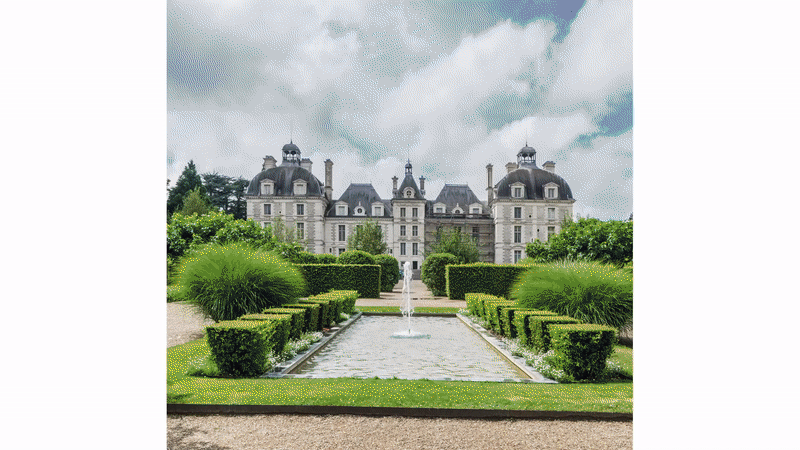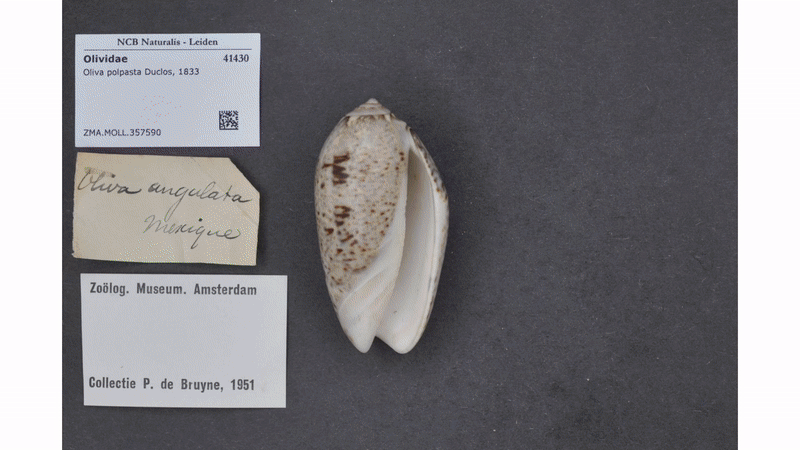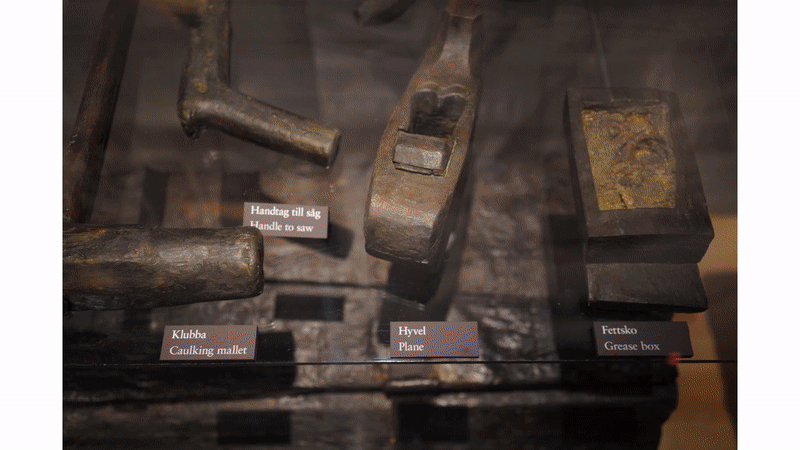PIECE ABOUT EVERYTHING
PART ONE PART TWO
The Accordionist did not know The Actor beforehand. The Actor had received a brief introduction to the main ideas behind the PhD-project, but no specific information about Piece About Everything (PAE). The Accordionist wanted to get The Actor’s immediate thoughts, remarks and questions after the premiere. He recorded the conversation with a Zoom H6, transcribed the recording and translated it into English. Below is a selection of edited excerpts from the conversation with recent comments and discussion referencing Rick Kemp’s affiliation of neuro science with acting and Philip Auslander’s musical persona added in purple.
ACTOR: And so… now I just wrote all the thoughts that came to mind. Because what I experienced was…I have written:
Time
Space
Theme about Religion / Faith (is what I felt)
Power / Power Figures
And these 3 stations you made…I saw it as something intensifying.
And then I experienced texture – a play with materials. There was some wood, air, an instrument, a croquet mallet.
And then something with a table with tablecloth – and a chair over here – and a lectern – a church (now I just fantasize about what I experienced)
And then I also experienced a tantalizing uncertainty: what is planned and what is not planned?
ACTOR: So now comes a shit question, someone once asked me after a show. And perhaps there is no answer. There does not have to be an answer… But… Is there a reason I should see this?
Is there a statement? Is there a statement with it all? A meaning? ‘I would like to express this with it’, ‘This is what I think about’?
ACCORDIONIST: I‘m afraid I can’t give an answer – although I would love to! Usually I have a pretty clear idea of what is at stake in the pieces I play. But this one seems kind of sterile.
I follow orders – now do this, now do that – and I have to execute them exactly on time, but there isn’t really any information in the score about anything else.
ACTOR: How do you receive such a piece [from the composer]. Does it say, for example, that these glass beads are about such and such?
ACCORDIONIST: I know that a lot of the material in the piece comes from the composer’s own life. Childhood memories, catholic hymns, the grandparents house, the glass bead game, riding the metro, a favourite bar. But there’s also a strong sense of depersonalisation. The things I play, for example the glass bead rhythms in the first movement and the way the accordion notes change in the second, are all developed through Nørgård’s infinity series, that is, by using an algorithm. And although the row of photos in the 3rd movement has been curated a bit, it was initially randomly machine-generated from the online media database ‘wikimedia’.
ACTOR: That’s wild. So it's like…you just sit and read music?
ACCORDIONIST: Yes, to a very high degree compared to many other pieces I play.
The second piece tonight [Simon Steen-Andersen’s ‘Asthma’ for accordion and video][1] is actually a bit similar, but it contains some flexibility. In Asthma the music is very squarely notated and everything follows a click-track, but the resulting sounds should be organic – most of them illustrate human breathing. So there is freedom and agency in shaping these air sounds – and of course in the voice-overs for the different speaking characters in the video. This feels closer to ‘regular’ music, where you interpret what’s written; bring life to the score.
Since I don’t see the screen during the performance it is difficult for me to know how it all works together, what it’s really about. Maybe I will understand more once I see a video recording of it.
I feel like I'm just a tiny little piece in some game.
Furthermore we didn’t have a long rehearsal period – it’s all put together just now and played once, and then we may play it again in half a year – or maybe never.
But tonight I was really just trying to do the right things at the right time. With whatever intensity that seemed to fit.
ACTOR: These are crazy circumstances. When I play theatre we rehearse for several weeks before the premiere (which is never the best performance), and then at some point, you might hit it – one evening I went through a type of gate, through the filter and got a completely different texture, and dynamics, a completely different ownership of what I was doing. And then it grew – it was almost like a stopper was pushed out of the ketchup bottle. Everything could grow wilder, better, bigger reserves, far more presence. It is a huge factor that you are so strictly tied to something!
ACCORDIONIST: In this piece, I think there is exceptionally little room for manoeuvre. When I play PAE, I have decided nothing for myself. The score consists of mathematically constructed instructions glued to a click-track – any other accordionist could make the exact same performance. Except towards the end, of course, where the physical involvement and the guttural screams start to open cracks into something more human. Some of the screams today were truly frustrated ones. At first it’s like ‘1, 2, 3 and now I shall shout’ and then I shout – but later the score becomes insanely complex with instructions for each limb overlapping and changing so rapidly that I loose track. I am sure this multi-tasking overload is exactly what James intended – we talked about it in our early conversations – but it still feels genuinely frustrating when it actually happens. Which of course is the purpose!
I guess this demonstrates a distinction between being just me – although the frustrated me – and being the performer-me who diligently performs the score. In PAE most of the time I am the diligent but distanced performer. But I wish I could be more involved. That I could actively bring myself more into what I am doing. As with conventional instrumental music – or even Asthma.
The material in PAE almost seems to want to be detached from the human expression.
I feel a bit straitjacketed when playing it. I follow orders, but I do not feel personally involved. Physically, yes – completely wild towards the end – but not emotionally.
[It seems nonsensical that the accordionist says he was involved ‘physically […] but not emotionally’ - not only because he previously said he felt genuine frustration, but also from a neurological point of view. In his book Embodied Acting – what neuroscience tells us about performance, actor Rick Kemp unfolds (among many other things) the relation between emotions, body and conscience. Based on the research of neuroscientist Antonio Damasio, Kemp affirms that ‘the conscious experience […] of emotion […] is actually dependent on physical symptoms’ (Kemp p. 166), and that ‘consciously controlled physiological actions, such as altering the rate and tempo of breathing, changing muscular tension, adjusting body posture, controlling eye movements, and facial expressions not only communicate emotion to the audience (through the activation of mirror neurons), but can also generate an emotional experience for the performer’ (Ibid.)
Thus, the ‘completely wild’ activity towards the end of the piece will naturally prompt an emotional sensation because the body’s inner, unconscious reactions to the physical stimuli rises to a consciously detectable level. But during the rest of the piece, however, these reactions remain unconscious and leave the accordionist with an experience of emotionlessness.
The question is: can the accordionist make use of this knowledge to enhance his involvement in the performance through a deliberate emphasis on certain bodily actions? Would it be possible to work with ‘physiological actions, such as altering the rate and tempo of breathing, changing muscular tension, adjusting body posture, controlling eye movements, and facial expressions’ to establish a stronger sense of association with the piece and feel less distanced or even straitjacketed?]
ACTOR: We perceive so much that we do not perceive that we perceive. So you can also experiment with having an intention. Experiment with what it is you enter the stage with: Today I’ll try with thiscolor. I have an intention that ‘this is actually a lot of fun!’, ‘this is a party!’ or ‘I hate technology!’ Just a headline. Just that tiny bit. It settles as energy in your body when you go in there, which unavoidably flows out to the audience. As an actor, I often work with having intentions for the scenes. A ‘supertext’…a meta-layer. I cannot act 1000 things at the same time – but the intention you have propagates in your body. Even if only microscopic.
But the less on top you are of the material itself, the
ACCORDIONIST: …the more my intention will be to simply get through it, to survive.
ACTOR: Which will be an expression too!
[Synonymously with the actor’s use of ‘intention’, verbal metaphors have long been central to the accordionist’s instrumental practice: A metaphor describing musical expression or the quality of a sound (‘like single raindrops’, ‘from the core of the earth’, ‘weightless in the icy vacuum of outer space’, ‘foggy’, ‘as a sleeping child’) will alter subtle but essential nuances in the sound, because the intention propagates in the body that plays the instrument and microscopically change a ‘1000 things at the same time’, which cannot be consciously controlled. (Of course provided that musician is sufficiently ‘on top’ of the material and the instrumental tools are honed.)
Rick Kemp explains how neurological research shows that it is the same neural pathways that are activated in us when we practically do something, as when we see someone else doing the same thing, as when we imagine someone doing it – and furthermore that our physiological actions/reactions and conscious experience of emotions are mutually dependent. Although these mechanisms are essentially what many western acting methodologies are based on, from Stanislavski and onwards, Kemp hopes that the scientifically proven clarification and systematisation of elements that ‘communicate non-verbal meaning’ (Kemp p. 37) can facilitate more conscious training and application of them in order to improve performance.
In relation to PAE, the accordionist wonders if a more extended use of deliberate intentions could be another strategy to generate a sense of involvement.
(A systematic exploration of the neurological mechanisms in music-making similar to Kemp’s work for acting would be a fascinating endeavour, that lies outside the scope of Just Do It!.)]
ACCORDIONIST: A big difference between concerts and a theatre is that we typically only play a single concert and then move on to a completely different programme. Playing the same piece many times in a row is rare, so trying out different approaches on stage is difficult. But it could be interesting to consider: why do I go over to that glass bead game at all? Why do I want to go to the other station afterwards? And why do I want to get up and stand as a priest? Right now, I sort of just put the instrument down and go up there. And it may well be that it should be like this, but I could choose to nuance it – for example with different intentions.
ACTOR: Sometimes I can see that there is a desire for ‘the neutral’ in a performance – but that is so much an expression in itself. It’s like: here is a performance that must be systematic, which is such a powerful statement in itself that it should have a name other than neutral. Maybe it should be called – systematic insistence.
ACCORDIONIST: When you are supposed to be neutral, you might just become something random. Unless you deliberately choose something. There is a lot of freedom when nothing is given.
But I have not taken that freedom. Yet. Maybe because I feel that it is not there. But maybe it's there anyway.
[Prior to the accordionist’s final presentation concerts in Oslo, he met with the composer to go over the piece and its technical setup. They rehearsed the transitions between the movements to remember how much time the video file offered the accordionist to move from one stage position to the next, and the accordionist mentioned that actions like standing up, walking, sitting down could be done in different manners to convey different meanings. The composer responded that they see themself as a traditional composer writing traditional musical works by using untraditional types of material, so actually the performing musician should not act in any theatrical way – unless theatricality is used as a tool to compose for example with pitch, harmony, gesture, video and so on. In PAE, the accordionist is simply meant to walk, sit down, stand up, as an accordionist would normally do on stage in a concert situation. But this is already a general ‘intention’ for the accordionist, namely that of a conventional instrumentalist, which is a deliberate choice rather than a random rendition of ‘neutral’.
The composer even continued to give another – and more potent – intention to how the glass bead playing could be thought of as a child completely absorbed in a game, oblivious of what happens around it.
So it seemed that the accordionist’s customary use of metaphors/intentions in his instrumental practice was not alien to the composer after all.]
ACTOR: What is interesting, for example: does it say what clothes you should wear?
ACCORDIONIST: No, hahah…
ACTOR: But the fun thing is – and this can drive you mad – everything that exists, exists.
For example, the idea of being a neutral character is an illusion. Because you are not. The moment I see you there, you are scanned. ‘Maybe he's that type… he has that beard, he wears those glasses, those little soft shoes… then he's probably that type…’
ACCORDIONIST: We instantly make such strong judgements. Everything exists and… you noticed it. I don’t think anyone with a music background would notice that I am wearing black clothes. Because we always wear black. That's the consensus – a ‘neutral’ look that doesn’t interfere with the music. They would notice if I didn’t wear black. If I wore extraordinary glasses or colourful clothes, then they would think: costume! But of course black is a costume, too. We just choose not to think about it.
ACTOR: It would be crazy if you stood in there in a Disney outfit, but yes, black is a costume. He wears black, so now I expect this and that. In black you are the classical musician who moves into this new field, and then there’s a kind of ‘well that’s unusual. He is wearing black clothes, so he probably plays classical music, and then this must be something new, I wonder how long he has been doing this for…’ A whole row of thoughts just because you are wearing black.
There is always something – perceived differently by everyone – but there is always something to play with. It can be small things. It can be – the way you… your posture. Or the length of your steps. Or what glasses are you wearing…
[In the introduction to his book In Concert: Performing Musical Persona, performance studies scholar Philip Auslander states that he sees musical performance as ‘the performance of a persona that is defined through social context and interaction and that is not necessarily a direct representation of the individual musician’s personality, though it may be’ (Auslander 2021, p. 90). When the accordionist of PAE enters the stage dressed in his usual black concert clothes, wearing his private glasses and his average beard, he already performs a certain persona, which will be read differently depending on the knowledge and presuppositions of the audience; a (contemporary) music expert may be oblivious to aspects that are significant to a theatre expert. The untraditional types of material included in PAE automatically brings the whole stage into play – as the actor says, ‘everything that exists, exists’ – and therefore amplifies the importance of the visual appearance compared to a conventional concert. Ideally, the rigorous performer should take the entirety of this expanded stage into consideration and demarcate the areas that deserve closer attention.
Whatever the performer decides, the audience’s view can never be controlled. Perhaps this is the reason why the audience’s visual perception is the focal point of Auslander’s musical persona. When Auslander writes that ‘a pit musician’s expression of emotion though the music is of no interest to the audience for the show’ (Auslander 2021, p 111), it is clear that his concern is the musician’s visual display of emotions – not the actually sounding music. Auslander supports this stance by saying that ‘in relation to musical performance an idealized imaged of the musician as emotionally expressive is conveyed through dramatizations of the process of music making that purport to expose the musician’s internal state while performing.’ As examples of such visual expressions that ‘serve as coded displays that provide the audience with external evidence of the musician’s ostensible internal state while playing’, Auslander mentions the ‘guitar face’, that is, ‘the distorted expressions that appear on the faces of rock guitarists, particularly when playing a solo’ and the ‘tenor face’ of, for example, Pavarotti. (Ibid., p. 111-112). Arguably, it is impossible for the audience to know the performer’s thoughts, but the readily understood – almost cliché – visual examples of ‘faces’ reveal that Auslander’s musical persona disregard the subtle but essential connection between a musician’s emotional engagement and the quality of the resulting sounding music as discussed above in relation to Rick Kemp’s book (distorted guitar sound <=> an inner feeling of distortion <=> distorted facial expression) as well as the fact that some musical techniques require a specific and highly extraordinary use of the body, that is, the use of the tongue, jaw and lips to sing the repertoire that Pavarotti mastered. When Auslander states ‘the musician’s performance persona as […] the primary means through which the performer communicates with the audience’ (Ibid., p. 2), the communication in question is of a completely different tangible – or even symbolic – kind than the substantial non-verbal subtleties addressed by Kemp. Although Auslander’s musical persona is useful for the audience to analyse and conceptually understand a musical performance, and for a composer to construct the work, it comes short in understanding how (and who) the performer actually performs.]
ACTOR: That's another question: Were you yourself? Who are you really when you stand there?
Is that something you know? Have you thought about it? Are you Andreas or do you play some kind of theme? Do you play a comedian or do you just experience what happens?
Do you have any sense of who you really are when you're in there?
ACCORDIONIST: A key question. It seems to me that PAE is different to other performative works I have played, works that have a greater degree of freedom in the score, where I develop parts of the material myself, or the score includes sections of improvisation. A few years back I played another piece quite a lot, SELF-CARE by the Irish composer and performer Jennifer Walshe, and here, for example, the score asks you to develop an OCD pattern resembling that of a captured polar bear in the zoo. The score asks the performer to check out specific YouTube videos and read articles to understand what type of material to develop, but the performer fully decides exactly what they want to do and how. But even old-fashioned notated instrumental scores from the 18th century still invite – or rather need – the interpreter to make a lot of interpretative decisions in order for the music to come alive.
I don’t think we talk about characters in music the same way as you do in theatre – as a person/role – but we do use the word to describe the distinctive nature of specific sounds’ (or motifs or rhythms or intervals, and so on). When I play purely instrumental music, I try to be as present as possible in every note. I want to connect myself to the character of the sounds. In that sense I'm me, but I'm not myself. I am filtered through the music – or vice versa.
[PAE has minimal space for the type of co-creating performer from SELF-CARE. Musically interpretative leeway hardly exists in the insistingly strict score, and except for a few general intentions the desired non-theatrical ‘neutrality’ rules out further exploration of the physiological-emotional interconnectivity described by Kemp. The actions are precisely executed, and expect towards the very end, the piece cannot ‘grow wilder, better’ with ‘bigger reserves, far more presence’ as described by Jonas Kriegbaum when weeks of exploration in a theatre play allowed him to pass ‘through a type of gate, through the filter and got a completely different texture, and dynamics, a completely different ownership’.
Instead, PAE seems to subscribe to ‘the automaton approach, [which] allows for dispassionate exploration where the performer is not a character, but rather facelessly enacts content’, as explained by Matthew Shlomowitz in MusikTexte (2016). This is of course not a value judgment of PAE per se, but unaligned expectations usually cause frustration, and unfortunately the accordionist’s initial expectation was not to be a dispassionate, inhumane automaton.
Automaton or not, however, the responsible performer still needs to ‘open [them]selves to the other who are there and respond to him’, and if the material is not spontaneously captivating, some effort must be done to find a meaningful connection. Almost two years after the premiere, the accordionist felt a new connection to PAE when reading an interview with the composer in the Danish online music journal Seismograf called ‘I would very much like to survive, thanks in advance’[2]. In this interview the personal elements from the composer’s life that PAE contains – but relentlessly denies to unfold – were suddenly fleshed out in the full expression of real life. The title of the piece suddenly made sense.
The biographical knowledge about the composer added a humanness to the piece, which motivated the accordionist to search for (new) ways to respond to the work. This time by focusing on the actions themselves rather than their potential meaning: The satisfaction of a bead-clack rhythm in perfect sync with the click-track in his ear, the joyful efficiency of memorizing rhythms through verbal sentences, the physicality of playing of loud sustained sounds on the accordion and turning the bellows precisely, the rolling in the chest of a guttural scream.
For the accordionist this perspective provides pleasure and presence in the performance: He can enjoy just doing the stuff on stage. But he wonders if it makes a noticeable difference for the quality of the performance or for the audience. Perhaps the actions were a bit more precisely executed – but next to the visually dominant video screen throughout the piece, the details of the accordionists’ performance easily withers away.
However, the actor’s initial question lingers: ‘Is there a reason I should see this?’
Although the accordionist has found a way for himself to connect to the piece, this does not necessarily improve communication to the audience, and he wonders if even the most intensely focused performance saturated with the ‘systematic insistence’ of the impossible neutral expression will be enough to sustain the interest of the audience, and to invite or intrigue – or simply irritate – them through the automaton and into the heartfelt conflicts, which, judging from the interview, is in fact encapsulated in the piece.]






